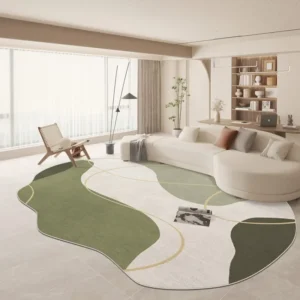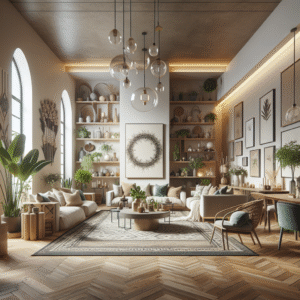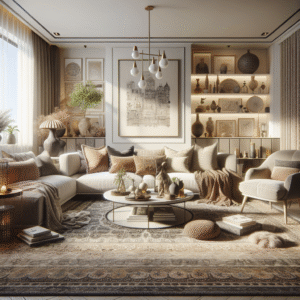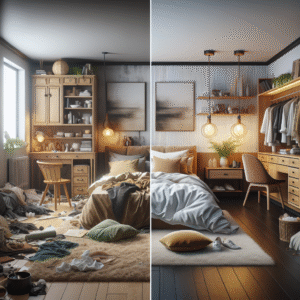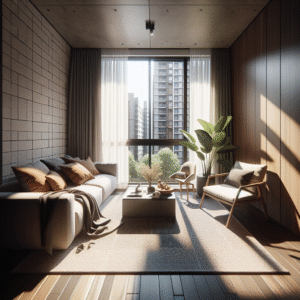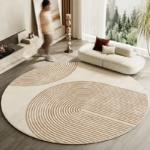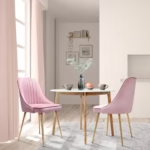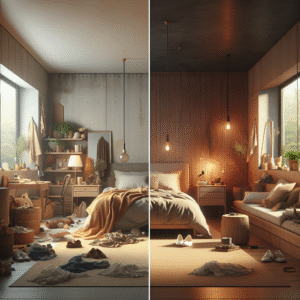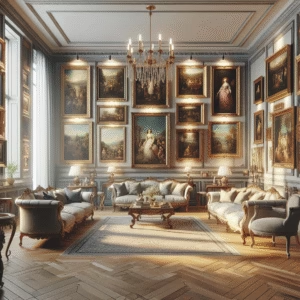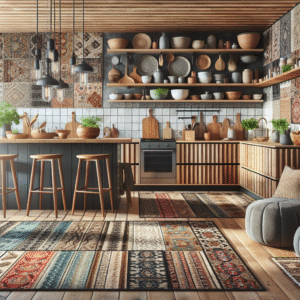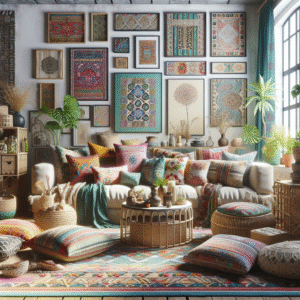Transform Your Home: Creative Decor Ideas to Distinctly Separate Living and Dining Spaces
Are you tired of your living and dining areas blending together into one chaotic space? You’re not alone. Many homeowners struggle with the challenge of creating a functional yet aesthetically pleasing separation between these two essential areas. Fortunately, there are creative decor ideas that can elegantly define your living room and dining room while enhancing your overall home design.
In this article, you’ll learn about innovative design concepts, practical tips for decor, and how to maximize the utility of each space. We’ll explore how colors, furniture layout, and decorative elements can help you achieve distinct living and dining environments. Whether you’re working with an open floor plan or a more traditional setup, these insights will guide you towards a beautifully separated home.
Here’s a brief roadmap of what we’ll cover:
- The Importance of Distinct Spaces
- Creative Color Schemes
- Furniture Arrangement Techniques
- Using Rugs and Textile to Define Areas
- Incorporating Decorative Dividers and Shelving
- Final Touches and Personalization
The Importance of Distinct Spaces
Understanding the significance of distinguishing between your living and dining areas is essential for enhancing both functionality and style. A well-defined space cultivates an inviting atmosphere, optimizing social interactions while still catering to individual needs.
Why Separate Living and Dining Areas?
Separating living and dining spaces can lead to numerous benefits:
- Functional Clarity: Each area serves its unique purpose, helping you stay organized and focused.
- Improved Aesthetics: Distinct spaces allow for tailored decor that complements each area’s function.
- Better Flow: Proper separation encourages smooth transitions between spaces, making your home feel more cohesive.
Creative Color Schemes
Your color palette plays a vital role in visually dividing your living and dining spaces. Here are some creative ideas to achieve that:
Contrasting Colors
Using contrasting colors can create a stark yet harmonious boundary between areas. For example, painting the living area in a soft beige while opting for a rich navy blue in the dining area can define each space effectively.
Monochromatic Scheme with Thematic Accents
Adopting a monochromatic scheme where variations of one color are used can unify your design while incorporating thematic accents. This method maintains continuity while allowing for distinct features in each area.
Furniture Arrangement Techniques
When it comes to separating spaces, furniture placement is the unsung hero. Here are some arrangement techniques you can apply:
Defining Boundaries with Furniture
Use sofas, chairs, or even large plants to create physical boundaries without taking up too much space. Positioning the back of a sofa towards the dining area not only delineates zones but also offers a cozy feel to the living space.
Multi-Functional Furniture
Consider investing in multi-functional furniture pieces, such as an extendable dining table or a storage ottoman. These solutions conserve space while still offering distinct functions.
Using Rugs and Textiles to Define Areas
Textiles, including rugs and curtains, can be powerful tools in visually separating spaces. Here’s how:
Area Rugs
Rugs can clearly define your living and dining areas. Choose different styles or colors to anchor each section, effectively creating a visual distinction. For instance, a plush area rug in the living room can denote comfort, while a more formal, patterned rug in the dining area can evoke elegance.
Incorporating Textiles
Use different textiles for furniture and window treatments in each area. Soft throws and cushions in the living room can create a cozy feel, while linen table runners and cloth napkins in the dining area can add sophistication.
Incorporating Decorative Dividers and Shelving
Adding decorative elements can enhance separation and serve functional purposes. Consider these options:
Room Dividers
Folding screens, bookcases, or even plant stands can act as effective dividers while providing additional storage or decor space. Choose designs that align with your home’s style for a cohesive look.
Floating Shelves
Floating shelves can create a boundary that’s less obstructive. These can be used for spices or decorative items in the dining area and for books or photos in the living area. This maintains a sense of openness while establishing separate zones.
Final Touches and Personalization
Now that the main separation strategies are in place, personalizing the areas can elevate your aesthetic even further:
Art and Decor
The right pieces of art can define space and correlate with the room’s theme. For instance, a vibrant painting can enhance the liveliness of your living area, while an elegant centerpiece can refine the dining area.
Personal Touches
Finally, infuse personal touches through decor that reflects your personality or heritage, such as showcasing family portraits in the living space or decorative serving ware in the dining area.
Conclusion & Next Steps
Transforming your home through creative decor ideas can significantly enhance the functionality and aesthetic appeal of your living and dining spaces. By implementing these strategies, you can enjoy distinct areas that cater to both relaxation and dining needs. Remember, a well-planned space not only increases the usability of your home but also enhances your overall living experience.
Ready to make your home a reflection of your style? Start by selecting a color palette that resonates with you and evaluating your current furniture arrangement today. For further inspiration, check out our articles on creative dining room ideas and living room makeover tips.
Frequently Asked Questions
What are some budget-friendly ways to separate living and dining spaces?
You can use area rugs, furniture arrangement, and decorative elements like curtains to create a division without significant cost.
How can I enhance the flow between living and dining areas?
Maintaining a consistent color scheme and using furniture that complements both areas can improve flow while retaining distinct identities.
What types of furniture are best for small spaces?
Look for multi-functional pieces such as sofas with storage or collapsible dining tables that can adapt as needed.
Can I use open shelving as a divider?
Absolutely! Open shelving can provide a visual separation while allowing light to flow between spaces, keeping the feel open and airy.
How do I choose a rug size for my living area?
Measure your space and select a rug that can accommodate all key furniture pieces, ensuring at least the front legs of large furniture rest on the rug.
Content Disclaimer
The information provided in this article is for educational purposes only and should not be considered professional advice. For specific guidance tailored to your circumstances, please consult a professional.
Categories
- Accent Walls & Ceilings (14)
- Art Curation & Gallery (29)
- Bedding Style Trends (42)
- Bedroom Makeover (34)
- Bohemian & Eclectic Styles (14)
- DIY & Budget-Friendly Decor (13)
- Eco-Friendly Design (14)
- Furniture Care (33)
- Home Decor & Design Ideas (103)
- Home Wellness Spaces (14)
- Integrated Outdoor Living (13)
- Kids and Nursery Decor (14)
- Living Room Decor (34)
- Minimalist & Japandi Style (17)
- Mix & Match Techniques (33)
- Modern & Contemporary Design (13)
- Rug Sizing & Placement (33)
- Seasonal Home Decor (36)
- Small Space Solutions (18)
- Wall Art & Painting Tips (36)
Recent Posts
Recent Comments
Archives
Product Gallery
-
 Large Area Green Rugs for Bedroom Nordic Living Room Decoration Shaped Carpet Irregular Plush Lounge Rug Home Thick Washable Mat Rated 5.00 out of 5$57.07 – $359.83Price range: $57.07 through $359.83
Large Area Green Rugs for Bedroom Nordic Living Room Decoration Shaped Carpet Irregular Plush Lounge Rug Home Thick Washable Mat Rated 5.00 out of 5$57.07 – $359.83Price range: $57.07 through $359.83 -
 Nordic Style Rugs for Bedroom Morandi Living Room Decoration Carpet Large Area Geometry Lounge Rug Home Cloakroom Non-slip Mat Rated 5.00 out of 5$40.98 – $620.81Price range: $40.98 through $620.81
Nordic Style Rugs for Bedroom Morandi Living Room Decoration Carpet Large Area Geometry Lounge Rug Home Cloakroom Non-slip Mat Rated 5.00 out of 5$40.98 – $620.81Price range: $40.98 through $620.81 -
 Irregular Shapes Living Room Decoration Carpet Modern Style Rugs for Bedroom Home Thicken Plush Rug Fluffy Soft Lounge Floor Mat Rated 4.75 out of 5$58.00 – $360.83Price range: $58.00 through $360.83
Irregular Shapes Living Room Decoration Carpet Modern Style Rugs for Bedroom Home Thicken Plush Rug Fluffy Soft Lounge Floor Mat Rated 4.75 out of 5$58.00 – $360.83Price range: $58.00 through $360.83





